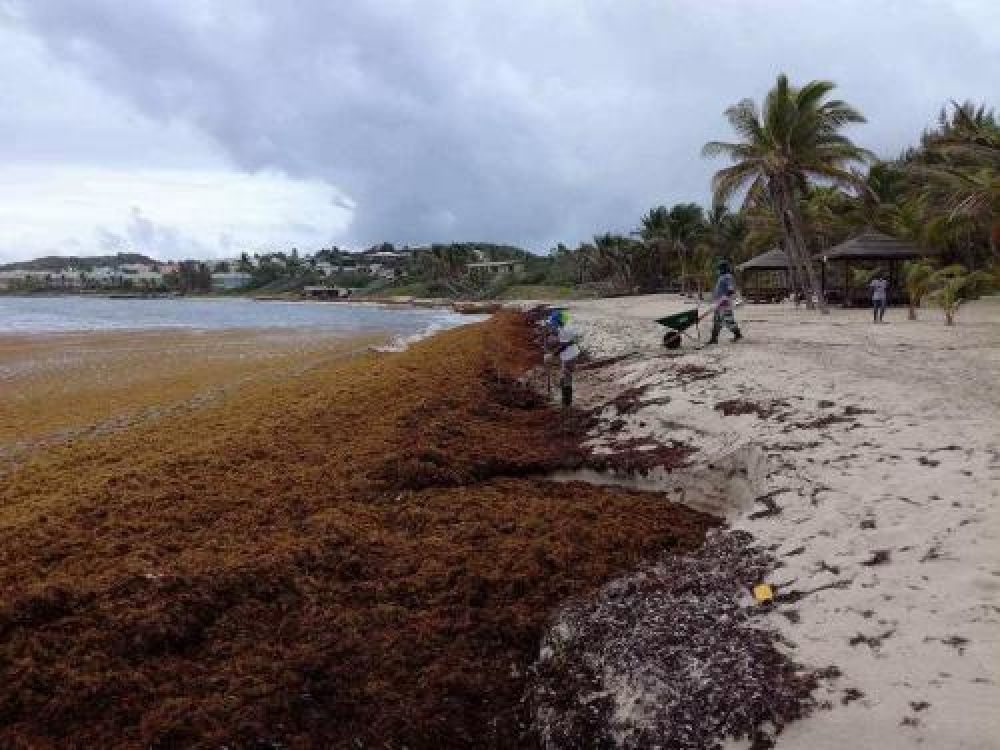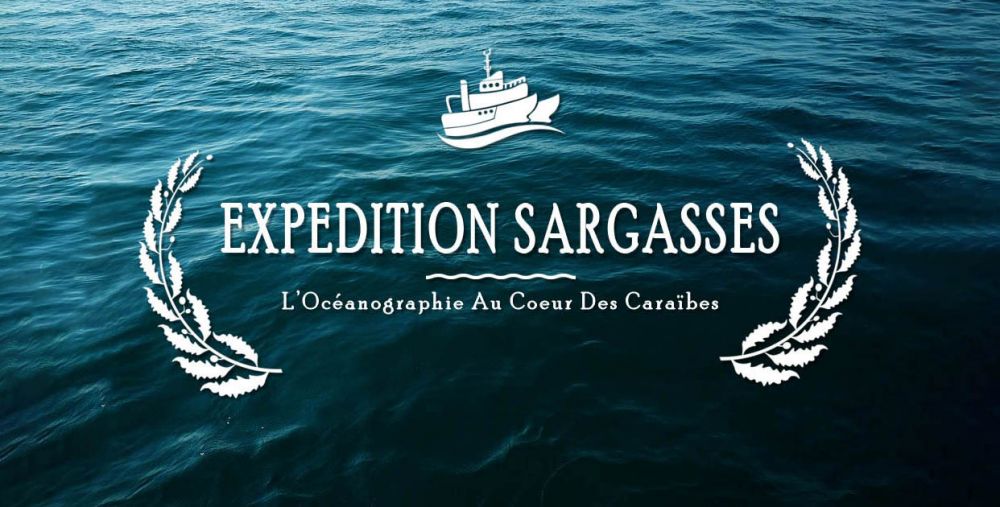A scientific expedition to better understand seaweeds
The last satellite surveillance image dated June 23rd from the research department Nova Blue shows a large concentration of seaweeds north and southeast of Guadeloupe. “Current meteorological disturbances make predicting landing sites difficult. However, the risk of beaching is high over the next few days in Guadeloupe, its territories, and the northern islands,” the report states.
In Saint-Martin, the collectivité is responsible for managing seaweeds. Annie-Marie Bouillé, director of the environment, manages the pickup of seaweeds with the help of the green brigade from the Centre Symphorien d'Insertion. She also monitors the quantities picked up on public property in Saint-Martin: 938 tons in 2015, 728 in 2016 and 278 since January 2017.
Even though their weight is significantly reduced once dried, the massive landings of brown seaweeds on the beaches of the West Indies is nonetheless a blight. Furthermore, the proliferation in the region since 2011 is still a mystery. Although the analysis of the satellite images has allowed scientists to trace their origin back to the Atlantic to the estuary of the Amazon, the identification of this specific type of seaweed has not yielded any answers, nor the cause of its proliferation outside of the old Sargasso Sea.
That is why the French scientific community has decided to take action. Since June 19th through to July 13th, 2017, researchers from the Mediterranean Institute of Oceanography (MIO), located in Marseille, will participate in the study of “seaweeds” on board the ANTEA, an IRD oceanographic vessel. They left Cayenne on June 19 for a 25-day trip between Guyana, the West Indies, and the Sargasso Sea. The purpose of this oceanographic cruise, supported by the French Oceanographic Fleet, IRD, and INSU-CNRS, is to determine the origin of the sargasso seaweed that run aground in the West Indies and to determine the physicochemical and biological mechanisms that favor their proliferation.
“During the project, an important sampling of the fauna and flora associated with ‘seaweed rafts’ will be carried out in particular by scuba diving. Researchers and teachers-researchers belonging to the IRD, from Aix-Marseille University, the University of the West Indies, the University of Western Brittany, and the Group of Study and Protection of Birds (GEPOG) will participate in this expedition,” the report indicated. Pending the team’s return, the public can follow the cruise’s progress on Twitter, Facebook or directly on theMIO website.
Photo 1: seaweeds beaching at Lucas Bay in May 2017 (photo credits: CSI)
Photo 2: print screen of the “Expédition Sargasses” Facebook page








